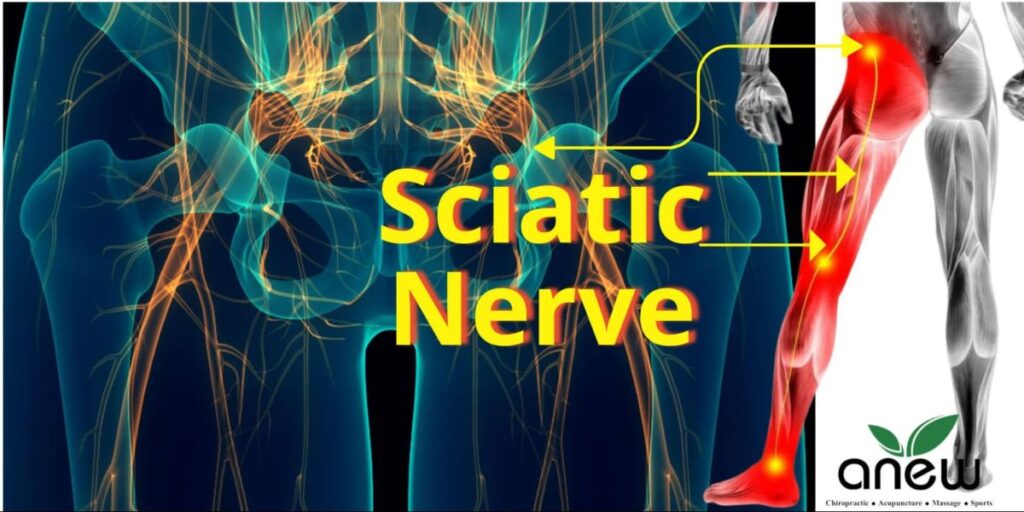When someone pulls a muscle in their lower back or experiences lower back pain, it’s typically caused by damage to the soft tissues that are supporting the lower spine, including all of the surrounding muscles, tendons and ligaments.
These soft tissues in the lower spine, also known as the lumbar spine, are of utmost importance in helping to maintain the body upright and support the weight from the upper body.
When there is too much pressure or stress placed on the lower back muscles and surrounding soft tissues, you can become injured, causing pain.
For anyone who has never had a back muscle strain or pulled a back muscle, they may believe that this is a minor inconvenience. However, the resulting pain and accompanying muscle spasms can be surprisingly severe.
Strains and Sprains of the Lower Back
There are many different ways of injuring your back, however, the two most common occurrences of lower back injury happen when you have either a strain or a sprain.
A muscle strain happens when a muscle starts to tear due to being overstretched or overused in the lumbar region. This muscle strain is commonly called a pulled muscle.
A sprain in the lumbar region occurs when the ligaments in this region are torn or overstretched. The tough, fibrous tissues that connect bones are called ligaments.
 Muscle Spasms & Inflammation in the lower back
Muscle Spasms & Inflammation in the lower back
Localized swelling or inflammation is the body’s response to any type of injury and occurs when blood brushes into the underlying injured tissue in an attempt to bring it back to health. When these tissues in the lumbar region are overstretched or torn, the result will almost always be inflammation with accompanying muscle spasms that are tender to the touch. These injured tissues may also cramp as they contract tightly during a muscle spasm, inflicting intolerable pain.
How long does Lower Back Muscle Strain pain last?
The muscles from the hip, pelvis, buttock, and hamstring work together to help the lumbar spine support the upper body. It’s not common that when there’s an injury to the lower back, you can feel it through your hips, buttocks and even your hamstrings.
A typical timeline for a back muscle strain and associated pain runs as follows;
- The most intense pain that you will experience will usually occur in the first few hours or days. It is very typical to have an increased amount of pain when there are certain changes in body position or movements such as bending forward or standing up.
- After this initial acute onset of pain, it will taper off in intensity over the next couple of weeks. There will be pain flare ups while doing certain movements, especially any rapid or hard movements involving the spine, or if you do a lot of standing or walking. During this tapering off period, you can expect to be stiff and have tenderness in the affected area.
Although painful, a pulled muscle is easy to diagnose and treat, and the symptoms typically resolve within four to six weeks. However, with more acute lower back injuries, especially a complete muscle tear, it can take months to heal and severely impair your ability to function normally.
What are the Symptoms of a Lower Back Muscle Strain?
Symptoms of a back muscle strain can range from slightly irritating and barely noticeable to excruciating and debilitating pain. However, most symptoms are not acute resulting in lower back stiffness, muscle spasms, and localized tenderness.
A majority of lower back muscle strains are simply irritating and subside within a few hours or days, and have a great long term prognosis. However, if your lower back pain lasts for more than a week and you are unable to continue normal day-to-day activities, you should seek medical attention.
Common Symptoms of a Pulled Back Muscle
Below is a list of symptoms you can expect when you have pulled a lower back muscle or have experienced any type of lower back strain:
- In the majority of cases, you will experience a dull pain or ache in your lower back. Typically, these strained muscles will be tight or sore. If you find that the pain that you’re experiencing is more electric, tingling, or hot, this is probably due more to a nerve that has been irritated, rather than a muscle strain.
- If you experience more pain with increased movement, this is typical of a pulled back muscle or lower back strain. When you move, you activate the affected muscles that have been damaged and cause pain flare-ups, especially when standing up, bending forward, or when you have been sedentary for a prolonged period of time, as when you first get out of bed in the morning.
- Localized pain in the lumbar region of your spine in the buttocks, hips, and lower back are indicative of a pulled lower back muscle. If your pain travels down your legs into the calf and ankle areas, this may be more indicative of sciatica.
- Difficulty doing everyday activities like walking, standing, or bending due to stiffness in the lower back or lumbar region
- Muscle spasms and inflammation go hand in hand causing intense pain from a lower back strain. This localized inflammation and muscle spasms limit mobility due to the swelling in the surrounding soft tissues, sometimes causing excruciating pain.
- Experiencing relief from pain when resting the lower back, as when seated in a recliner with legs elevated.
- Experiencing temporary relief from your symptoms while lying on the floor or in bed with your knees elevated.
A telltale sign of a lower back muscle strain is intense pain from muscle spasms.The muscle fibers in your lower back are intertwined with an extensive network of nerves that when damaged, can create excruciating pain. This acute pain comes on suddenly and can be traced back to a specific event.
Thankfully, the severe pain from a lower back strain will subside gradually over the course of a week, or two.
However, it may take as long as six weeks to get completely back to normal after the initial injury if you seek treatment and rehab your back with appropriate stretching and exercises.





